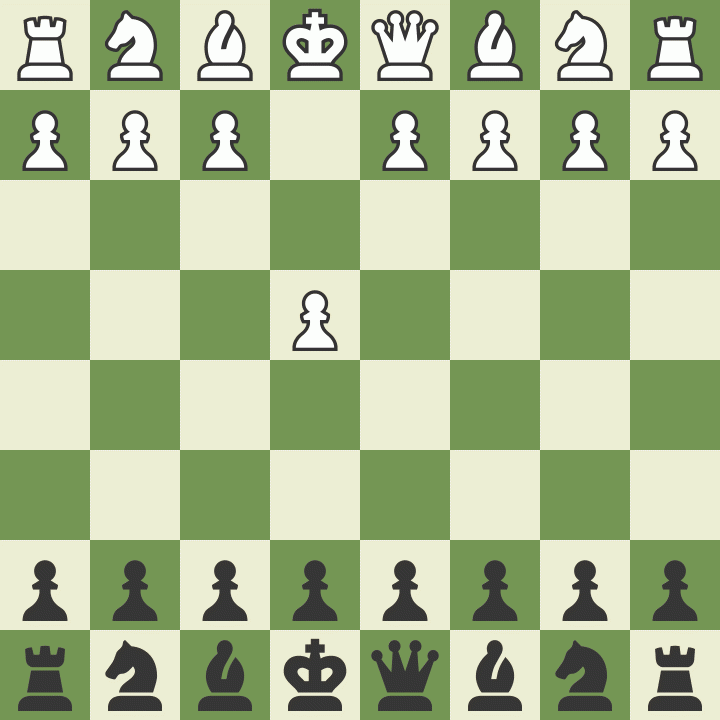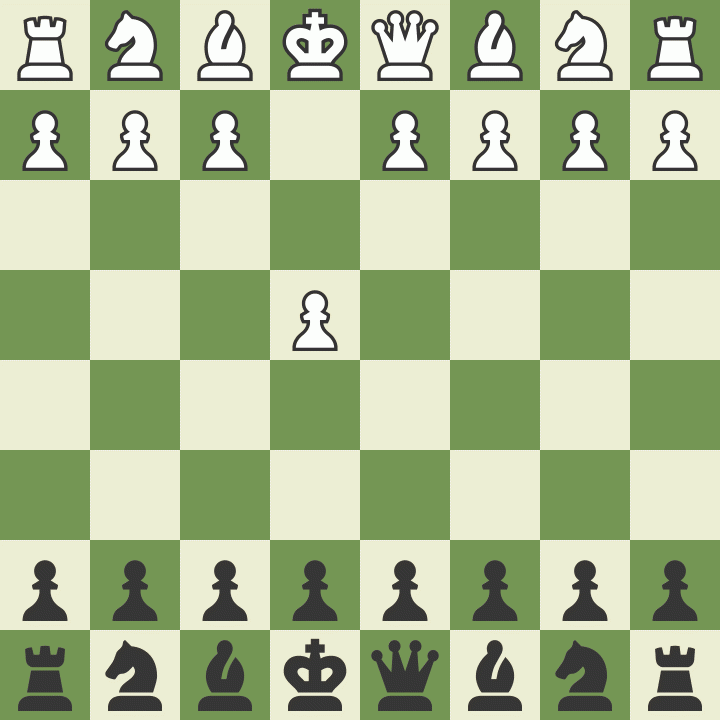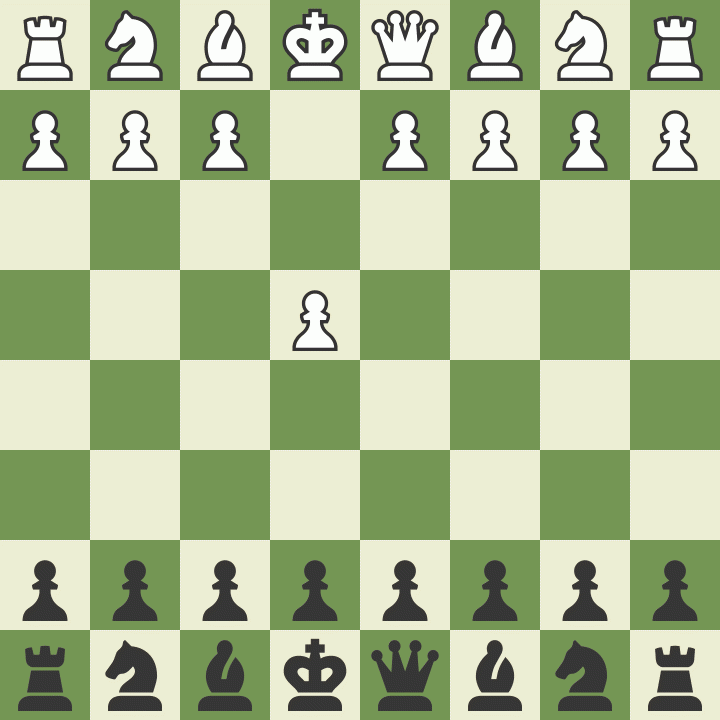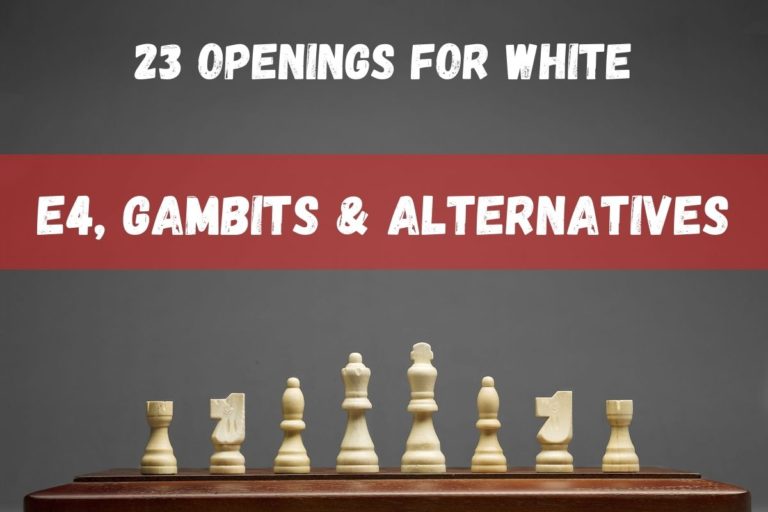The Stafford Gambit: Moves, How to Play & Counter as White
⭐⭐⭐ Take 4 minutes to read and improve your chess game ➡️ : This article was first published on, and is Copyright of Chessquestions.com
The Stafford Gambit is a chess opening that black can play to surprise white. It’s considered a risky opening, but it can lead to some very interesting positions if played correctly. In this article, I take a look at the different lines and ideas behind the Stafford Gambit. I also discuss how to play and counter as white.
So, whether you’re looking for an exciting new opening to add to your repertoire, or you’re just curious about the Stafford Gambit, this article has something for you!
Learn Chess From the Best at a Price you Can Afford
Do you want to be a chess grandmaster?
Even if you don’t have the talent to become the next Garry Kasparov, you can still dramatically improve your chess skills and rating by learning from the Grandmaster himself in 1-2-1 Video lessons. He has over 20 courses to stream that will take you step-by-step to becoming a better player.
By following Garry’s instructions, you will see your ratings soar and be able to beat anyone who dares challenge you!
Learn more about this affordable online chess course now and get started on the path to becoming a grandmaster!
Stafford Gambit Moves
1. e4 e5 2. Nf3 Nf6 3. Nxe5 Nc6 4. Nxc6 dxc6 5. Nc3 Bc5
Explaining The Stafford Gambit
The Stafford Gambit opening is a gambit derived from the prestigious Petrov’s defense; the position that derives into traps is reached after (1. e4 e5 2. Nf3 Nf6 3. Nxe5 Nc6 4. Nxc6 dxc6 5. Nc3 Bc5)
The Stafford Gambit is an objectively dubious, but highly venomous opening. Meaning that if the white player responds appropriately, his game will be a very pleasant one.
Otherwise, if the white player overestimates the nature of the opening, there are many flamboyant development moves that will result in a win for the black player.
The Stafford Gambit is a nice opening to play in casual games against intermediate to beginner players in blitz or bullet time control. The opening is not recommended to use in serious play.
Explaining the Stafford Gambit Main Lines
From position 1. e4 e5 2. Nf3 Nf6 3. Nxe5 Nc6 4. Nxc6 dxc6 5. Nc3 Bc5, white can make several moves.
- ?? is used to mark the blunder
- !! is used to mark the best move
“Oh no my queen Line” if 6. Bg5??
1. e4 e5 2. Nf3 Nf6 3. Nxe5 Nc6 4. Nxc6 dxc6 5. d3 Bc5 6. “Bg5?” Nxe4!! (“Oh no! My queen!”) 7. Bxd8 Bxf2+ 8. Ke2 Bg4#
Just to show another possible response “7. Qe2 Qxg5 8. Qxe4+ Kd8! 9. Be2 Qc1+”
“Oh no my knight” if 5. e5 Ne4 6. d3??
This is line is slightly different
1. e4 e5 2. Nf3 Nf6 3. Nxe5 Nc6 4. Nxc6 dxc6 5. e5 Ne4 6. d3?? “Natural move, but a huge mistake!” 6 … Bc5!! 7. dxe4 (oh no my knight moment) Bxf2 8. Kxf2 Qxd1
“Take my knight i’ll take your rook”
1. e4 e5 2. Nf3 Nf6 3. Nxe5 Nc6 4. Nxc6 dxc6 5. e5 Ne4 6. d4 Qh4 7. g3?? Nxg3 8. fxg3 Qe4!!
“The most common line”
1. e4 e5 2. Nf3 Nf6 3. Nxe5 Nc6 4. Nxc6 dxc6 5. Nc3 Bc5 6. d3?? Ng4! 7. Be3 Nxe3 8. fxe3 Bxe3
Other lines in The Stafford Gambit
Petrov’s defense is a very solid defense option, often seen in top-level games. The meta opening derives from: 1. e4 e5 2. Nf3 Nf6 3. Nxe5 d6 4. Nf3 Nxe4 5. Nc3 Nxc3 6. dxc3 Be7 7. Be3 O-O 8. Qd2 Nd7 9. O-O-O Nf6 10. Bd3 Re8 which is called “Petrovs: Nimzowitsch Attack ” although seemingly passive, the doubled pawns in the c file are not as bad as they look.
Black is always trying to maintain the drawing chances and is always at the verge of a blunder. In the near future white will sacrifice the exchange of a rook in order to strengthen his light-squared bishop, or another possibility is to all in all sacrifice his dark-squared bishop if placed in the g5 square
Why does the Stafford Gambit matter?
The opening can hook the interest of beginner players to learn more about the game. It is a fun opening to play against “materialistic” players, who tend to capture pieces without hesitation. The opening is also useful in bullet games where many times no second thoughts are placed. On this instance a master level player can catch another one off guard and claim a win off the opening
Benefits of playing The Stafford Gambit
- It is especially good to use in bullet time rated games where no further calculation is required
- It can provide some fun wins and can be used to show off skills to an inexperienced player
Disadvantages of The Stafford Gambit
- The Stafford Gambit certainly isn’t an objectively good opening
- It’s not an opening to consider playing in classical chess
Is The Stafford Gambit Good for Beginners?
The opening could be regarded as a miscellaneous opening; therefore, the focus should be put somewhere else. If a beginner learns the opening, is strongly advised to limit the use of it; destroying creativity or slow down the learning process.
It is rather preferred for beginners to learn the basics such as Center occupation, not placing minor pieces in front of central pawns, lead in tempos, space advantage and king safety, but you can have fun learning the Stafford with the understanding, you may find yourself in trouble as you move up the ranks and face chess players with experience of handling this opening.
How Aggressive is the Stafford Gambit in Terms of an Opening?
In terms of aggression and traps in the miscellaneous category taking into consideration the fun aspect of the opening, the Stafford shares the podium with the Danish gambit, The Italian, Fried liver attack, and Variations of the Vienna game.
In any serious chess event playing the Stafford will likely lead to a long painful game for black.
Best way to Counter the Stafford Gambit as White
An intermediate player or a player with enough time to calculate can detect the shortcomings from the opening. Playing a common move such as h3, 1. e4 e5 2. Nf3 Nf6 3. Nxe5 Nc6 4. Nxc6 dxc6 5. Nc3 Bc5 6. h3!! leads to a winning advantage for the white player, quite flashy 6 … Bxf2 7. Kxf2 Nxe4 8. Kf3!! And the position resembles Fegatello but White is winning.
Another move can be 6. be2!!
The line seems to be aggressive but white ends up with a small advantage
6. be2 Ng4 7. Bxg4 Qh4 8. O-O Bxg4 9. Qe1














